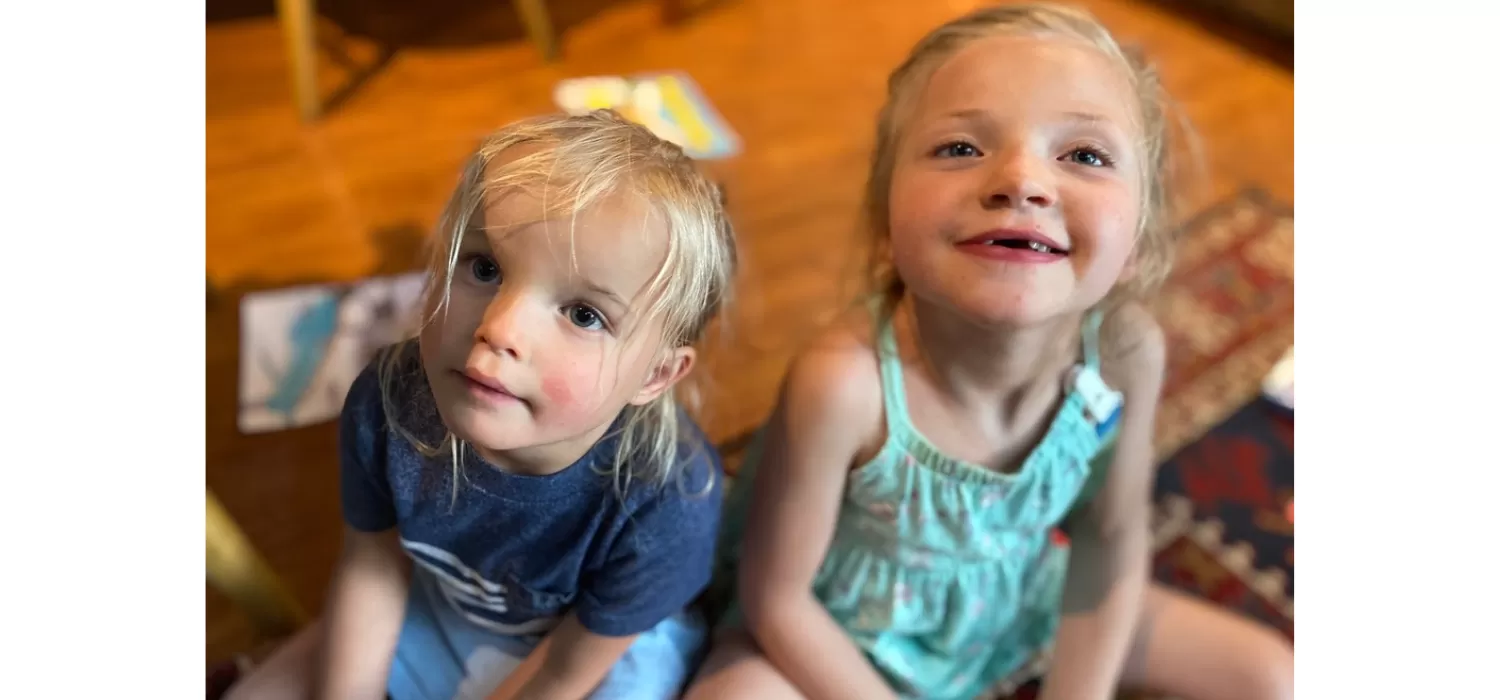Rare? Not to Us.

It was February 2020, and the message said, “I am calling from genetics and I have some test results I’d like to discuss with you.” This was on a Friday while my husband was out of town, and all weekend I stewed on what the results could be. Over the past two years we had been trying to identify the cause of the developmental losses Georgina had been facing.
To our knowledge Georgina (pictured on the left), our first child, had met all her milestones at 18 months old, however, her speech was not progressing. Even her pediatrician was not concerned, but a state evaluation indicated that she was 50% delayed in fine motor skills and speech, and we were shocked. Over the next year we signed her up for all the therapies, we brought her from doctor to doctor, testing everything from her mitochondrial function to her gut microbiome. We were at a loss.
I called the geneticist at 8 a.m. on Monday morning, probably right as she walked in the door. She said it was Rett syndrome. I screamed and dropped the phone. Unlike most parents who get the diagnosis, Rett was something I knew all too well.
In 2012, I started my postdoctoral research with the Medical Investigation of Neurodevelopment Disorders Institute at the University of California, Davis. I was so intrigued by autism spectrum disorder (ASD), and I wanted to pursue research in this field from a perspective of understanding how genes and environmental factors exert influence on the disorder. My postdoctoral training program consisted of a group of interdisciplinary PhD’s studying ASD from many angles, from a child psychologist to me, a neurotoxicologist.
During this training program I learned about Rett syndrome, and it was during my time in the program that my then-2-year-old niece, Cora (pictured on the right), was diagnosed with it. From a very personal level, I learned about the effects of Rett and the hope for a treatment.
After completing my training position, my husband and I had Georgina in 2016. I continued my academic pursuits in neurodevelopmental disorders at Regis University in Denver, Colo. Although at first she developed normally, Georgina never progressed in her language and in fact lost her early language and motor skills. Despite the fact that I was familiar with Rett, it didn’t cross my mind that it could be the cause, since I knew familial cases of the disorder are very rare. When the geneticist said Georgina had a mutation in the MECP2 gene, I couldn’t fathom it.
I called my brother, and he was equally shocked. We compared mutations. Cora had a single nucleotide point mutation at c.455 and Georgina a nucleotide duplication at x.898_899.
We met with Dr. Timothy Benke, who runs the Children’s Hospital of Colorado Rett clinic. His presence was calm, and Georgina gravitated to his entertaining demeanor. I explained my family history to him and questioned whether the girls’ mutations could somehow be connected.
His response hit me, “Lightning struck your family twice.”
Although I know that Rett is rare, it sure doesn’t feel that way to our family.
After the diagnosis, I spent hours in bed reading the primary literature on where Rett research is now, joined Rett family Facebook groups, and discovered the Rett Syndrome Research Trust. What really got me out of the devastating news about our family’s second Rett diagnosis is the support I’ve received from others and the HOPE generated by all the progress that is being made! RSRT has been working strategically to identify and fund the development of potential genetic-based cures, and they work in partnership with many biopharmaceutical companies to make these potential cures a reality. These facts help me feel positive about the future for Georgina, Cora, and everyone with Rett syndrome.


